Until recently, many dog owners and even worse professional trainers assumed that a puppy biting the leash suggested that they were attempting to establish dominance over their owner.
Most advice was geared towards disciplining the dog and exacting punishment, two things we now thankfully understand to be seriously counterproductive.
Related: How To Quickly And Easily Stop Your Puppy Biting The Leash
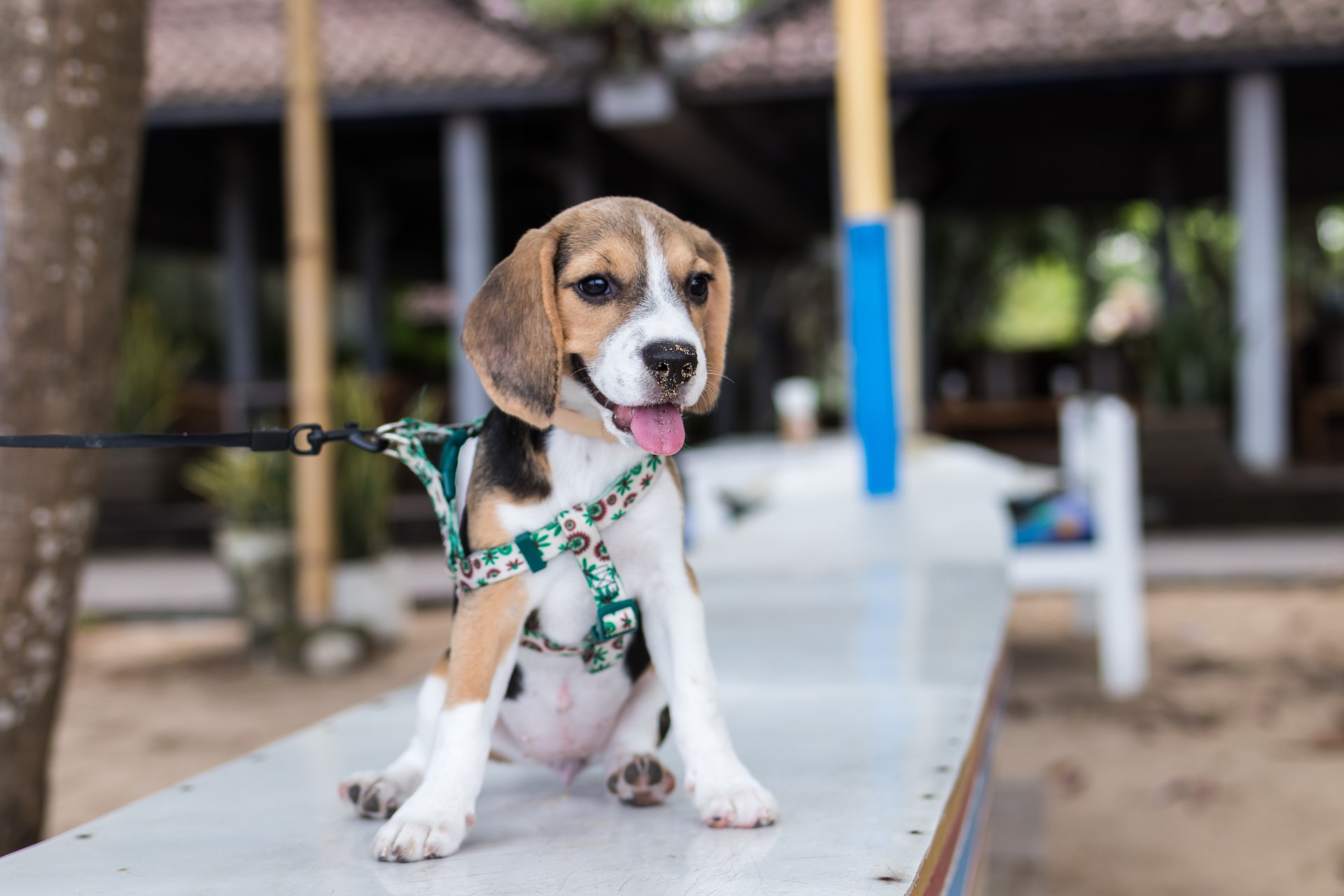
The last sensible course of action is to scold your puppy, as not only will it likely damage their long term socialization, but also and perhaps permanently diminish your position as the ‘pack leader’.
All of this is well and good, but what are loving puppy owners supposed to do to address this behavioral problem?
In order to start an effective training strategy, we need to first understand the reasons puppies bite and why they can so often play-up when on the leash.
Troublesome as it might sound, the fact is that the vast majority of puppies can be effectively guided to walk appropriately alongside their keeper.
Resorting to muzzles ought to be reserved for only the most problematic of dogs.
Why Puppies Bite
Puppies use their mouth to explore their world.
One of the reasons it is important to provide plenty of different textured toys is to help them perform this (and hopefully limit excessively destructive behavior!).
The problem, of course, is that puppies are not programmed to understand the boundaries of what is acceptable and prohibited.
From their perspective, that strange new leash is fair game for a nibble or two.
This is to be expected but will quickly become a problem should their leash biting become excessive.
Leashes are favored targets because they move.
Just as you may enjoy roughhousing around with your little pal, they love that activity for the interactive element it provides.
Once again, from the average pup’s perspective, walkies mean that the constantly moving leash is always trying to engage them in fun times.
Just like when roughhousing though, many puppies become overexcited and take it too far…
So before looking further into the specifics of leash biting, it is important to mention that puppies who bite their harness are much more likely to develop other snappy traits.
Even nips which do not hurt in the first couple of months can become much more serious when their adult teeth develop.
Biting anything apart from their toys should always be discouraged.
Here’s a selection of quick tips to help prevent this…
Related: How To Quickly And Easily Stop Your Puppy Biting The Leash
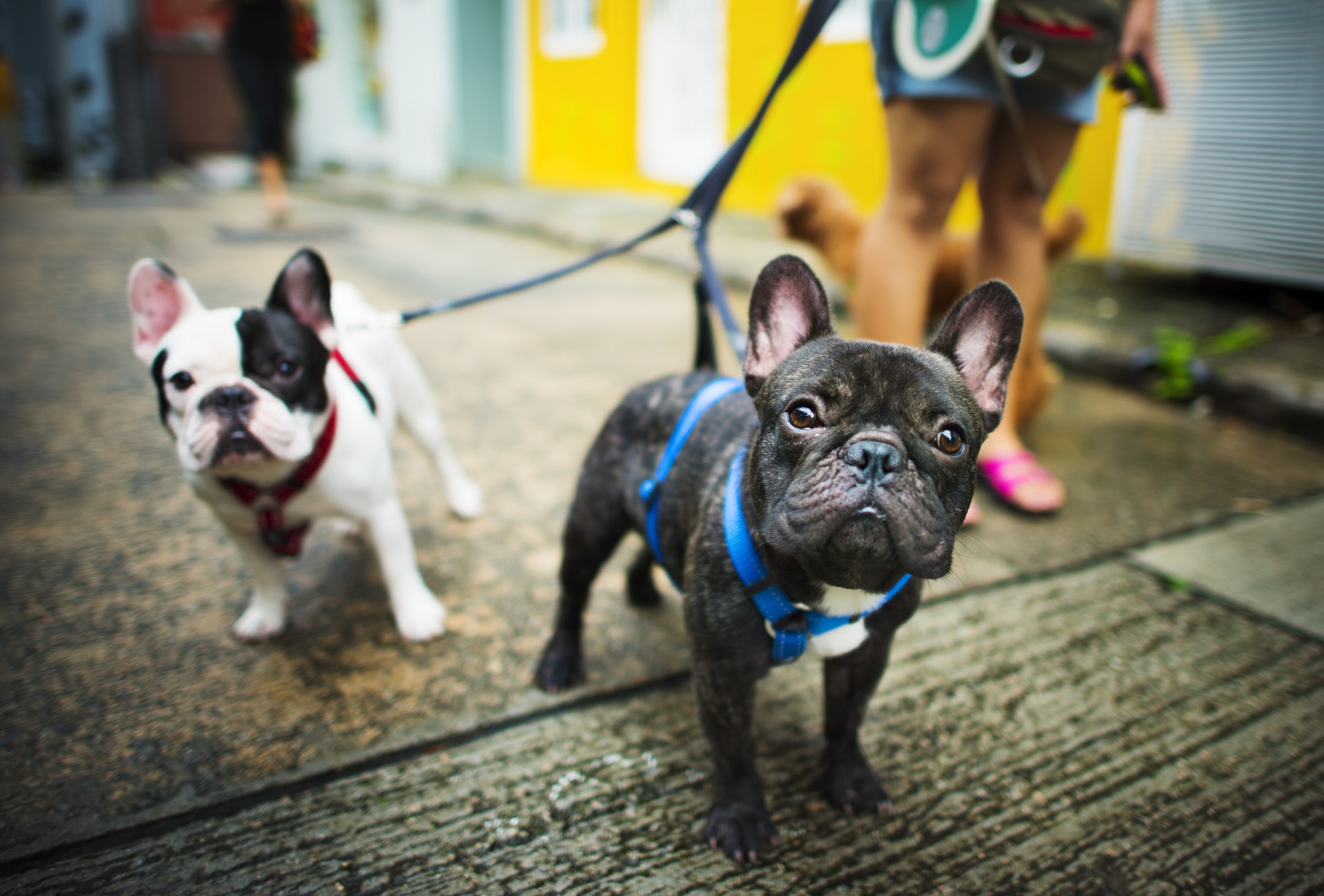
#1 – Limit roughhousing to at most a very occasional treat
Most trainers will agree that despite it being short-term fun, it can far too easily be misinterpreted and lead on to other issues which are much more difficult to address.
Try to prevent doing so as this is a learned behavior and not a natural one.
Throw a stick to be fetched rather than play ‘tug of war’.
#2 – Vocalize playtime
Should your pup become overexcited and provide a playful snap when being cuddles or groomed, always let out a shriek of pain even if it did not hurt.
Mimicking the actions of what other dogs would do will massively help your dog realize that biting humans/members of the pack is not appropriate.
When your puppy decides to gnaw on something naughty (slippers, TV remote etc) then tell them in a normal tone to “leave alone” or “give”.
Teaching these basic commands in puppyhood will provide a great foundation for more advanced training down the line – and will also work for leash training.
#3 – Praise don’t punish
Employ this mantra in all aspects of your playtime and early training.
When your puppy plays appropriately during and at the end of the session, give them a word of praise and a treat.
But should they be naughty, do not scold them.
Puppies will learn that misbehaving equals no treats sooner than most human children!
And raising your voice or even worse yanking on the leash will make them extremely confused and view you as being temperamental, unpredictable and unreliable.
Nobody wants that!
Related: How To Quickly And Easily Stop Your Puppy Biting The Leash
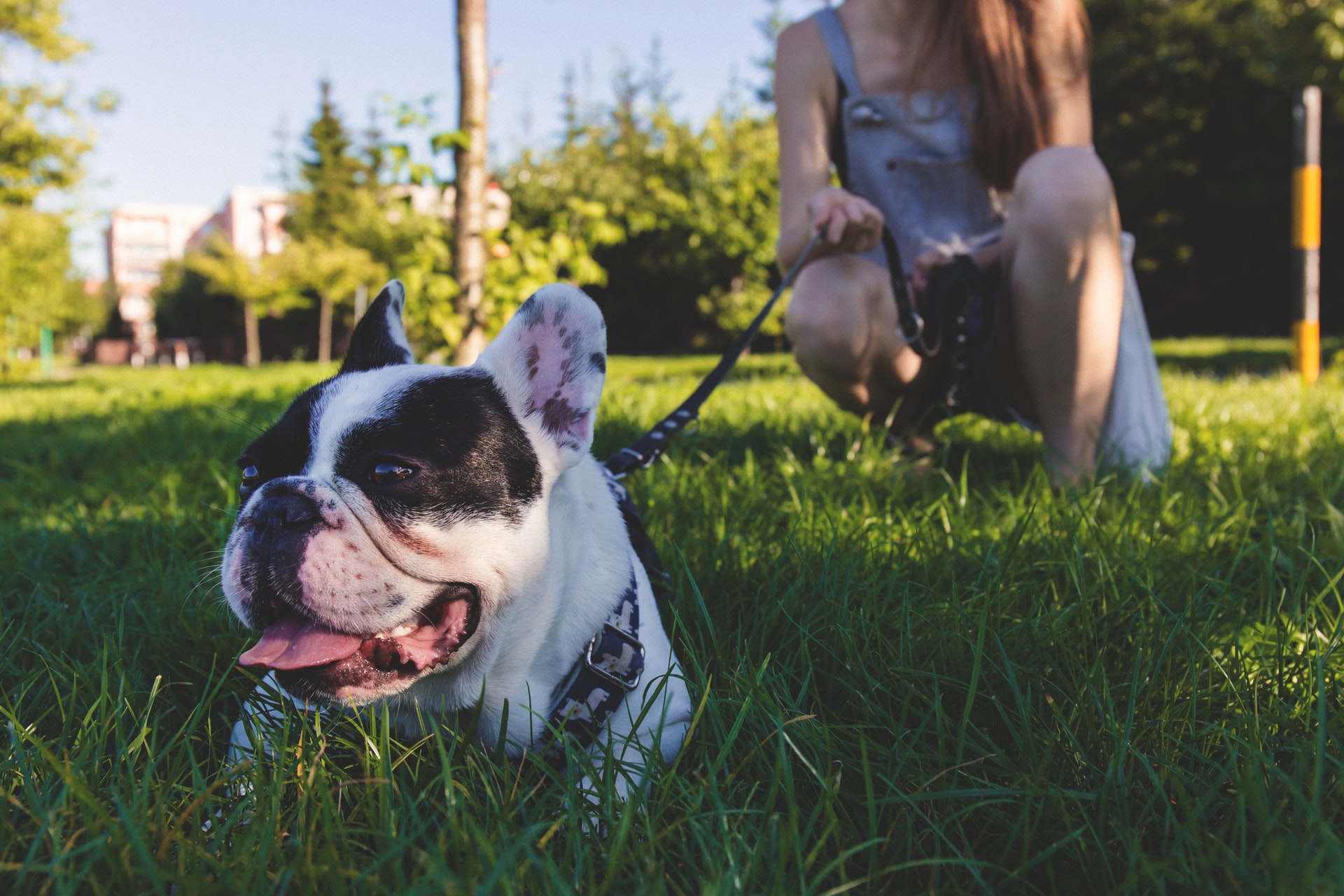
Reasons For Biting The Leash
Earlier we briefly noted that because leashes are always moving they can be compelling to puppies with a tendency to snap excessively.
But what makes them so prone to overexcitement?
The best way to explain this is to once again look at the world through the pup’s eyes.
Their first few weeks of going out for walkies is an entirely novel, fascinating and exciting time for them.
But thanks to their senses being so much more acute than ours, a distant bark may cause a frenzy of excitement, a waft of a barbecue become irresistible, and a speeding car may cause total panic.
Some dogs will react like this automatically while others will take it in their stride.
While there is no predicting how a dog will react when introduced to the great outdoors, you can also be sure that how they are domestically socialized will play a considerable role in managing it.
Dogs which are prone to using biting and gnawing as a stress reaction will more often than not go for the leash when startled during their exercise stroll.
You’ll notice this especially in puppies who spend much of the day alone indoors, as for them it’s synonymous with “playtime!”.
Overexcitement
It is only natural for them to become overexcited – which unfortunately can often be misinterpreted as them being deliberately naughty – when in fact it’s them just saying they want to be social and engaged.
A good analogy that tends to explain the majority of leash biting is that of kids on a very long car journey.
Most of us will have once been that kid – where whatever distractions have been provided for you grow tiresome, and you just want to get out and do something different.
This is exactly the same for puppies.
Ideally, pups will not be left alone for long periods during their infancy.
And providing them with steady and regular attention will in 9/10 cases reduce inclination for irregular biting or playing-up on the leash.
Should it be necessary to leave your pup alone for long periods, then you must provide huge amounts of toys to entertain them over the day?
It’s not ideal, but any little will help.
Related: How To Quickly And Easily Stop Your Puppy Biting The Leash
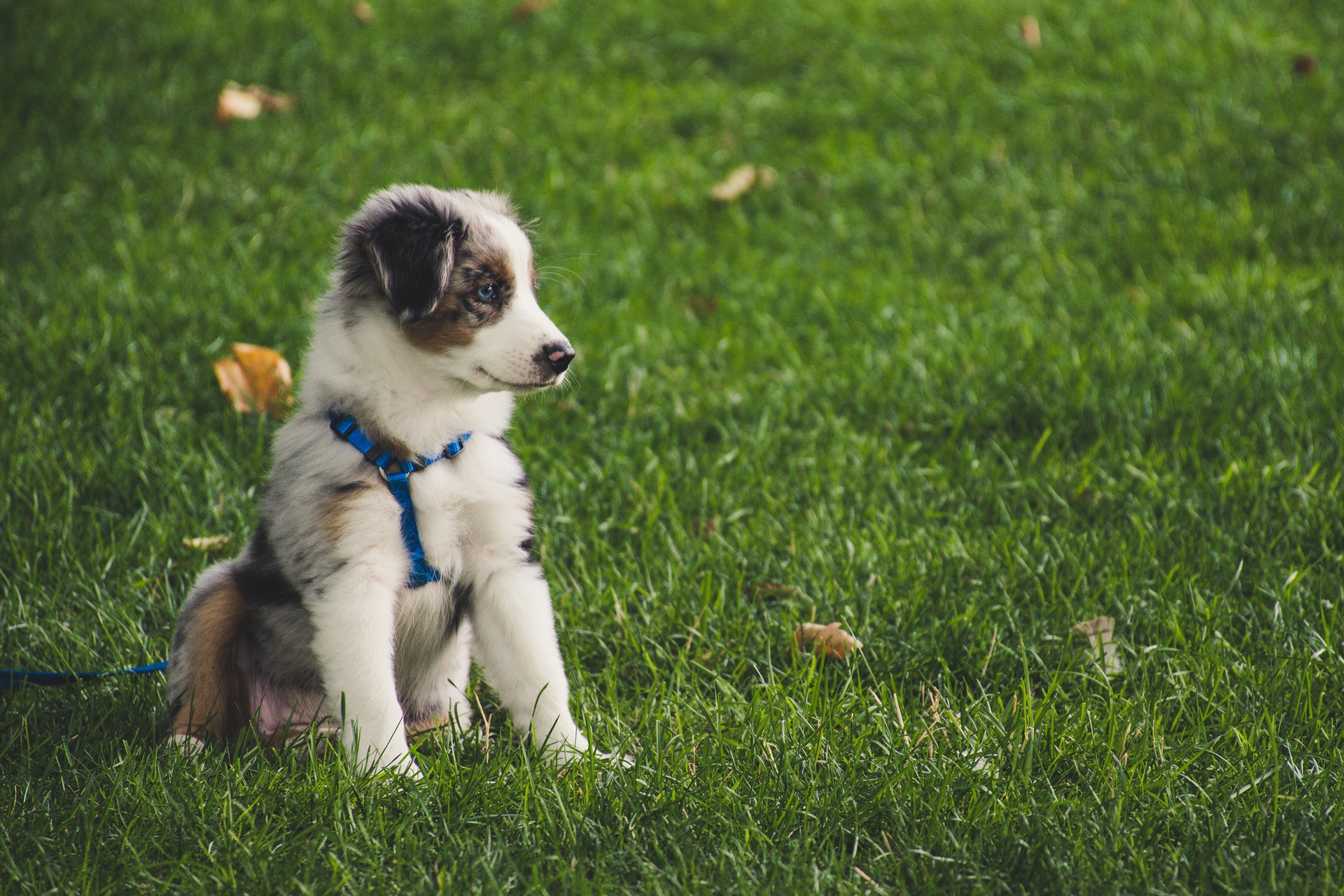
How To Stop Your Puppy Biting The Leash
Now we understand the key reasons why puppies may bite on their leash, let’s take a look at some of the best tips and methods which may help provide a long term solution.
As there are different extremities of this behavior, ranging from minor irritation through to generally chaotic, we’ll separate this into three sections depending on the severity of the issue.
Many owners find assessing how ‘bad’ this condition is quite tricky, so if you are unsure try out the early stages first and then progress.
Remember also that some dogs will best respond to a ‘mix and match’ of different levels.
#1 – Dogs Who Bite Due To Playful Boredom
Most dogs with this issue will be doing so because of boredom.
These tips are designed to add a level of structure to your walking times and provide distractions from snapping at the leash.
It is a good idea to follow these as routine inclusions for a number of months.
As your dog matures the eventual ambition is that they will grow out/have forgotten about their leash biting habit.
Encourage your dog to carry a branch/stick
What better way to limit biting than to provide something for them to carry/gnaw on during walkies? If you play retrieval games with your dog then this is often a very simple and natural solution. Highly recommended for those with high energy breeds.
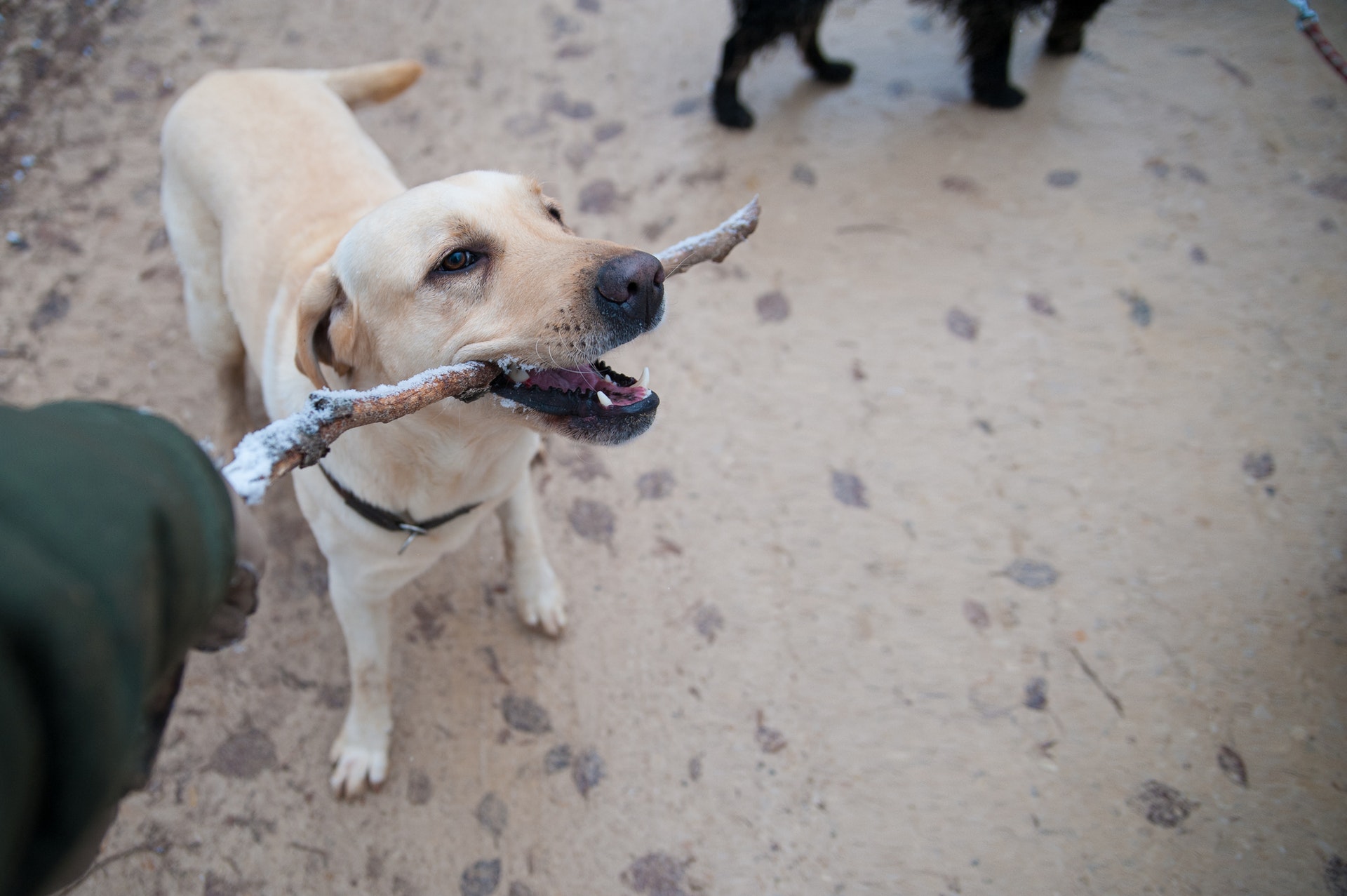
Mix up your training
Puppies have very low attention thresholds, so walking them down a straight road for half an hour is going to make them very bored in no time at all.
While it is important to be able to trust your dog walking by your side without yanking on their leash.
You need to make an effort to include more excitement while training.
The easiest way to do this would be to navigate obstacles that provide sudden changes of direction.
Trees are perhaps the easiest example, incorporate a slalom-style variation in the local woodland.
Use treats!
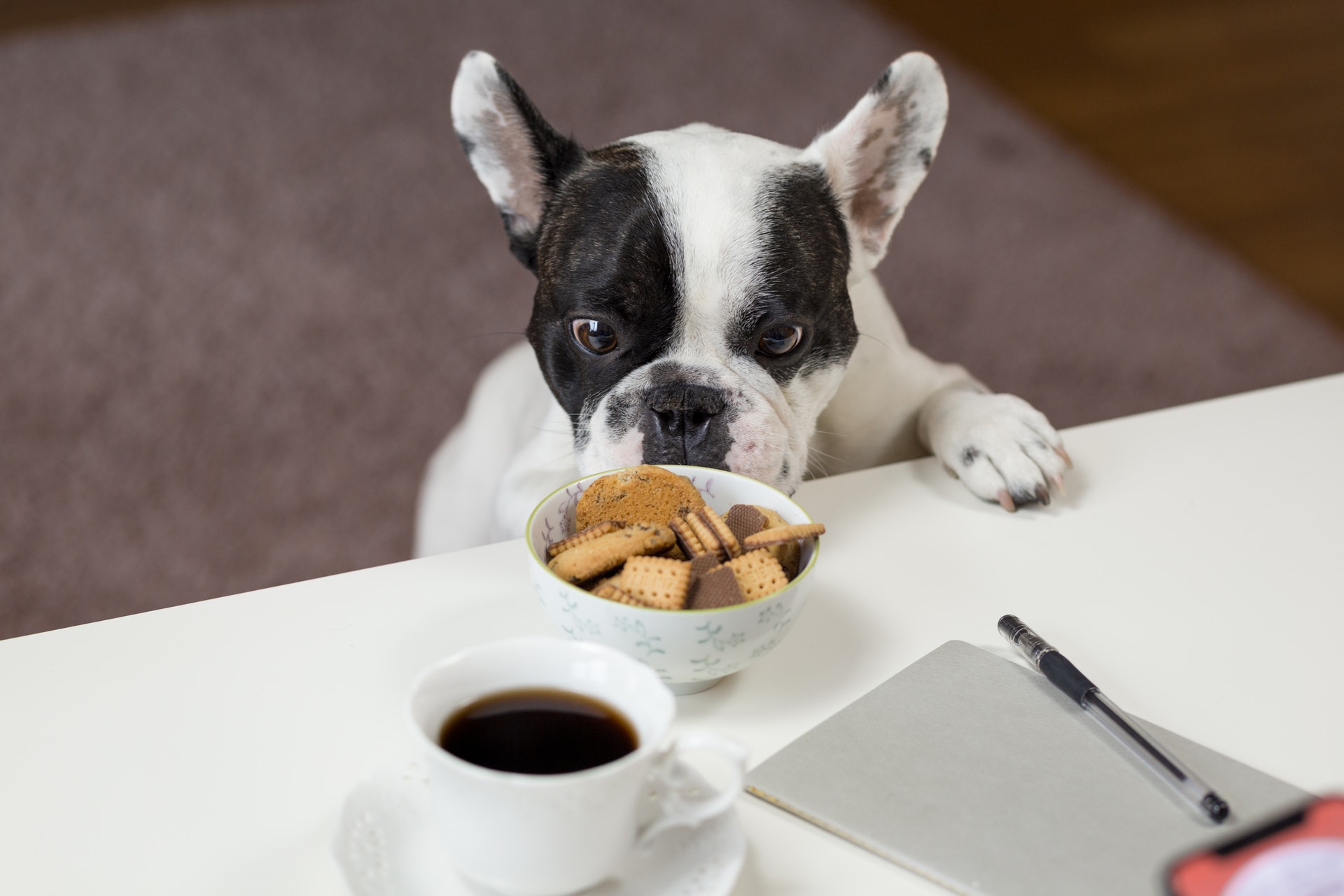 Tasty snacks are far more interesting than a harness.
Tasty snacks are far more interesting than a harness.
Bring your dog settled by your side and give them a treat.
Once you have their attention fully, toss another just over a nearby obstacle (bush, wall, car, or anywhere safe and controlled).
Command them to “Find” and stop each time they begin to drag you, hold the position for 5 seconds and then instruct again.
The idea is that they will understand that good behavior leads to a reward, while also making the involved and engaged in playful training.
Try to perform this, or your own variation at the beginning and end of exercise times.
Experiment with leash lengths
Extendable leashes are a great option for dogs who you believe are biting due to feeling frustrated/limited at how far they can explore.
Remember the power of their senses are so much superior to ours, and that puppies are naturally inquisitive.
Just allowing them to sniff around some bushes will transform a repetitive walk into wonderful playtime.
Incorporate further training by using treats to call them close and also behave on shorter leashes.
Once again, it’s all about reinforcing good behavior and relaying the message of what constitutes good and bad behavior.
Vary your routes
If you decide to allow more freedom on walks then consider also mixing up your environments.
This is good general practice anyway, so try and provide as much variation as your schedule allows.
While it is important for puppies to become used to being around people/cars, they will be more interested in natural environments packed full of scents and sounds.
The more of these found, the sooner they will forget about their leash habit!
Related: How To Quickly And Easily Stop Your Puppy Biting The Leash
#2 – Easily Frustrated & Excitable Puppies
In this case, we have puppies who are for whatever reason very prone to attacking their leash.
It is really for those who will do so several times over a half hour walk, and the following tips are best incorporated alongside the examples above.
Such a combination will hopefully also be beneficial for puppies entering adolescence when these behaviors really do need to be discouraged quickly.
Try to redirect leash biting towards a toy
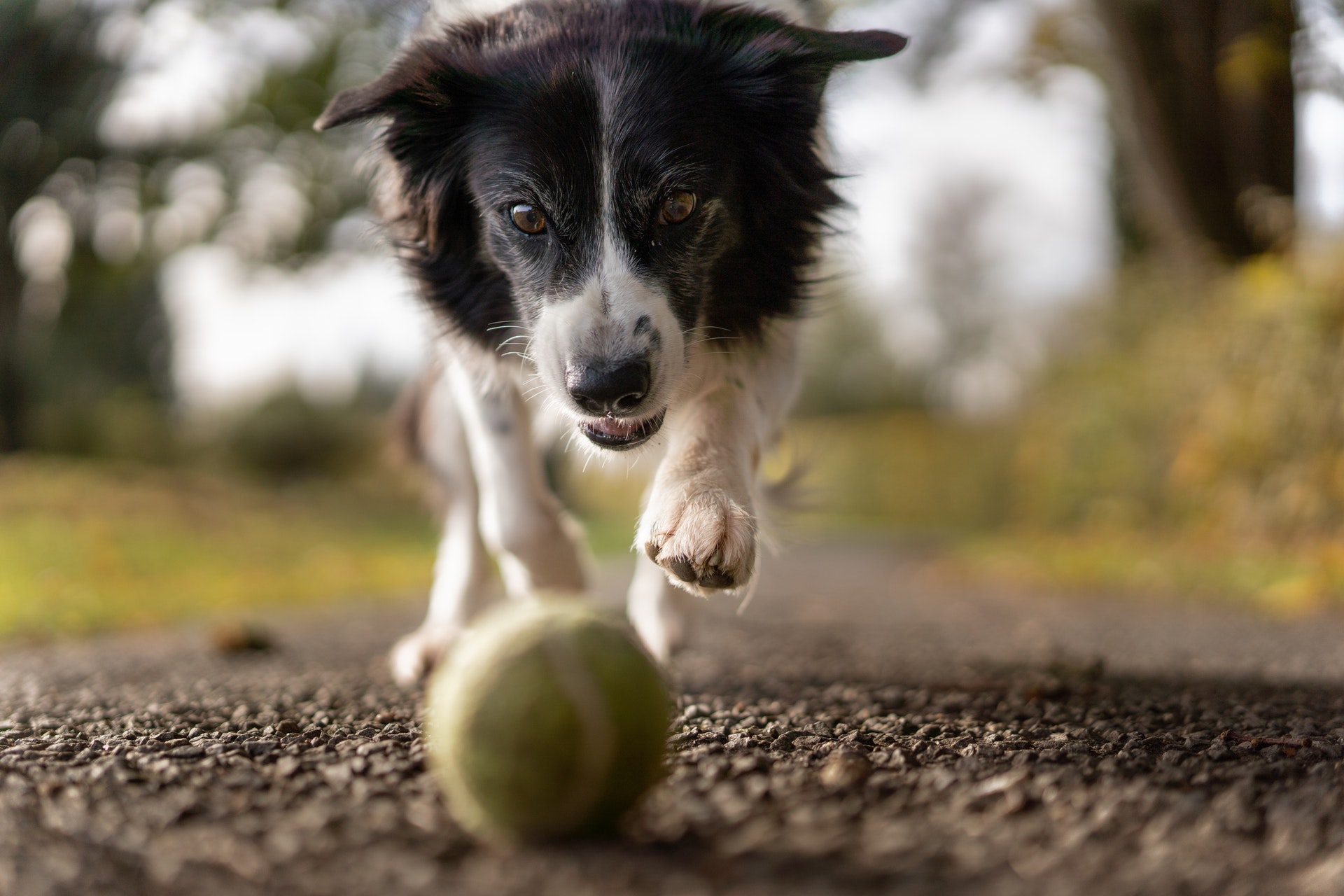 Many owners leave this until the leash habit is too deeply ingrained for it to be effective, but directing attention towards a favorite toy can work wonders.
Many owners leave this until the leash habit is too deeply ingrained for it to be effective, but directing attention towards a favorite toy can work wonders.
You just need to catch it and act early.
The problem, of course, is that just like human kids they will lose attention eventually.
If the leash is the next best thing then they will still go for it.
Just remain calm and see which toys work best (the stick example as explained above is useful for outdoors).
Consider applying a touch
By no means should your dog interpret this as a scolding behavior or even worse, a sign of aggression.
Some dogs who just ‘lose it’ when wrestling the leash can be calmed immediately by a simple pat.
However, others may become so frenzied that they will accidentally snap at your fingers.
This technique tends to have the best results when used with dogs who are naturally playful indoors and are used to your petting behavior.
Standardizing it for releasing the leash takes time and is not 100% effective by any means.
But is worth a try in some circumstances.
Command redirection
Perhaps the most useful way of calming more hyperactive puppies (and safest for our fingers) is to try and train them to be still/sit upon command.
Make no mistake, this can be a frustrating experience but with the sensible use of rewards, encouraging vocalization and above all else simple consistency it can work wonders.
You will need to be constantly monitoring your pup for any signs that they are going to attack their leash.
Before they do so, stop still and gently command “Sit”.
Hold for a few seconds and reward.
The trick here is to prevent them from getting wise to this and begin stopping on their own accord in anticipation of treats…
#3 – Obsessive Leash Biters
As explained at the top of this guide, there is no such thing as a puppy who is inherently programmed to behave badly on their leash.
Those who do have simply not been effectively trained or socialized – but fret not, for there is still hope.
These do require more averse techniques and it is difficult to get the balance right between being excessively punitive and trying to effectively retrain.
So should you have any doubts then consider speaking to a Professional Online Dog Trainer, or introduce these techniques slowly alongside a combination of the above.
Look also for when your dog attacks the leash.
Is it apparently random or at a specific time?
Consider this when deciding which are appropriate for helping your pup.
Have a ‘chill out zone’ at home
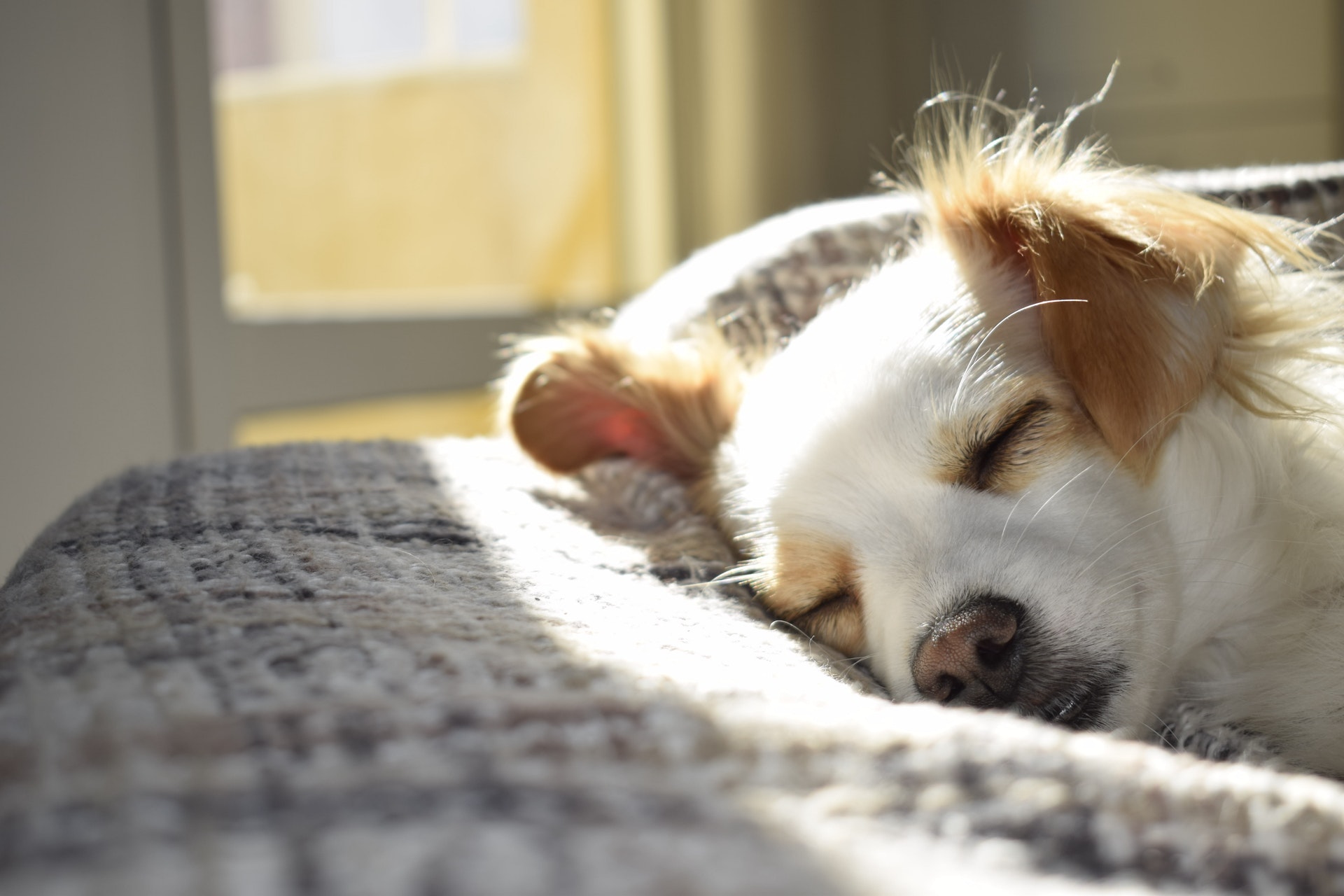 Does your dog immediately attack the leash before stepping out the door?
Does your dog immediately attack the leash before stepping out the door?
If so, it’s time to place them in a room alone to let them calm down.
How long this takes will vary, but generally, provide around a half hour.
Remember a bowl of water and remove anything valuable/destructible.
Now try and put on the leash again and repeat as many times as necessary.
Soon enough they will cotton on to the fact that snapping at the leash will lead to the removal of privileges.
And performed consistently, this can lead to startling improvements faster than you’d think but is not appropriate for dogs with a less severe habit.
It’ll confuse and likely agitate them further.
Related: How To Quickly And Easily Stop Your Puppy Biting The Leash
Step on the leash
If out and about and your dog is making familiar signs that it’s about to go into a leash frenzy, stop and stand/crouch with a knee on a short leash.
Allow them time to calm down – it will not take long.
Now carry on and repeat every time they make a similar move.
At first, your puppy may not understand but they will get the gist soon enough.
Provide treats if they can manage five minutes, then ten, fifteen, twenty and so on. Introduce this to a daily routine and it will likely produce results.
But just remember to allow for it in your schedule as walks will take much longer to start with.
Turn around and walk home fast
Exercise is important for all dogs, but this is a technique that works well in more severe cases.
If nothing else has worked so far, simply perform the ‘leash-step’ technique three times.
After this, turn around and walk home fast on a tight leash.
Don’t pull or drag, in fact, do not interact with your pup in any way whatsoever.
And don’t give them any treats or praise when you get home.
If they’ve been especially awkward then consider a spell in the chill out zone.
After a few times of this, they will click that fighting the leash means the end of the walk.
From the perspective of their reward system, experiencing a long stroll filled with treats and praise is much more interesting than a short leash wrestle.
Other methods
There are other methods to consider but they are rightly considered to be excessive in most cases.
Using muzzles alongside a spray (only water) any time they attack the leash may work in some cases but not others.
Either your puppy will become placid, or he will lash out at the bottle/you.
It is not something I’d personally recommend and a professional Online Dog Trainer might be your only option if all else fails.
There are also specialist desensitization exercises that may be beneficial if your dog bites the leash in specific circumstances (encountering cars, other dogs, people etc).
Personally, we would draw the line at using any kind of leash correction that will actually inflict pain/discomfort.
They have long been discredited as effective training aids.
Final Thoughts
Puppies who exhibit a tendency to bite their leash are in most cases doing so out of curiosity or frustration.
If addressed early and with care and consideration, they can usually be steered away from this irritating habit quite quickly.
As with all kinds of training though, it is down to the owner to consistently apply appropriate methods and behavior as the dog matures.
Related: How To Quickly And Easily Stop Your Puppy Biting The Leash
Old habit can die hard, and they do have a habit of popping up again many months later.
Should this be the case, look for any specific reasons to explain why they have started again (boredom, stress etc) and go back to the basics.
Do you have any thoughts on how to stop a puppy biting the leash? Feel free to leave a comment below…